 Search by Keyword
|
“YOU CAN’T DO THAT”
(John Lennon - Paul McCartney)
The influence of The Beatles on modern music is felt to this day. Whether current hit makers admit it or not, or realize it or not, the patterns and structures used in popular music most times can be traced back to the pathway paved in the '60s by the “fab four.”
 One of many musical details The Beatles spearheaded was the use of what we can call the 'two measure guitar riff.' This riff, which encapsulates guitar rock throughout the generations, was first popularized by The Beatles in the song “You Can’t Do That.” The Beatles used this feature continually throughout their career, evidenced in “I Feel Fine,” “Ticket To Ride,” “Day Tripper,” “If I Needed Someone,” “Paperback Writer” and “I Want To Tell You” among others. One of many musical details The Beatles spearheaded was the use of what we can call the 'two measure guitar riff.' This riff, which encapsulates guitar rock throughout the generations, was first popularized by The Beatles in the song “You Can’t Do That.” The Beatles used this feature continually throughout their career, evidenced in “I Feel Fine,” “Ticket To Ride,” “Day Tripper,” “If I Needed Someone,” “Paperback Writer” and “I Want To Tell You” among others.
 The riff usually appears at the beginning of the song, played only by the guitar, after which the rest of the band kicks in to play the remainder. The riff then becomes the most prominent, identifiable feature of the song as it is repeated throughout or in strategic places of the song. The riff usually appears at the beginning of the song, played only by the guitar, after which the rest of the band kicks in to play the remainder. The riff then becomes the most prominent, identifiable feature of the song as it is repeated throughout or in strategic places of the song.
Other '60s artists were quick to pick up on this trend, prime examples being The Rolling Stones ("The Last Time" and "Satisfaction"), The Yardbirds ("Heart Full Of Soul"), Paul Revere and The Raiders (“Kicks”) as well as The Monkees (“Pleasant Valley Sunday”). Evidence of this trend even made it to the '90s, with many hits such as “Blister In The Sun,” “There She Goes” and even “Smells Like Teen Spirit.”
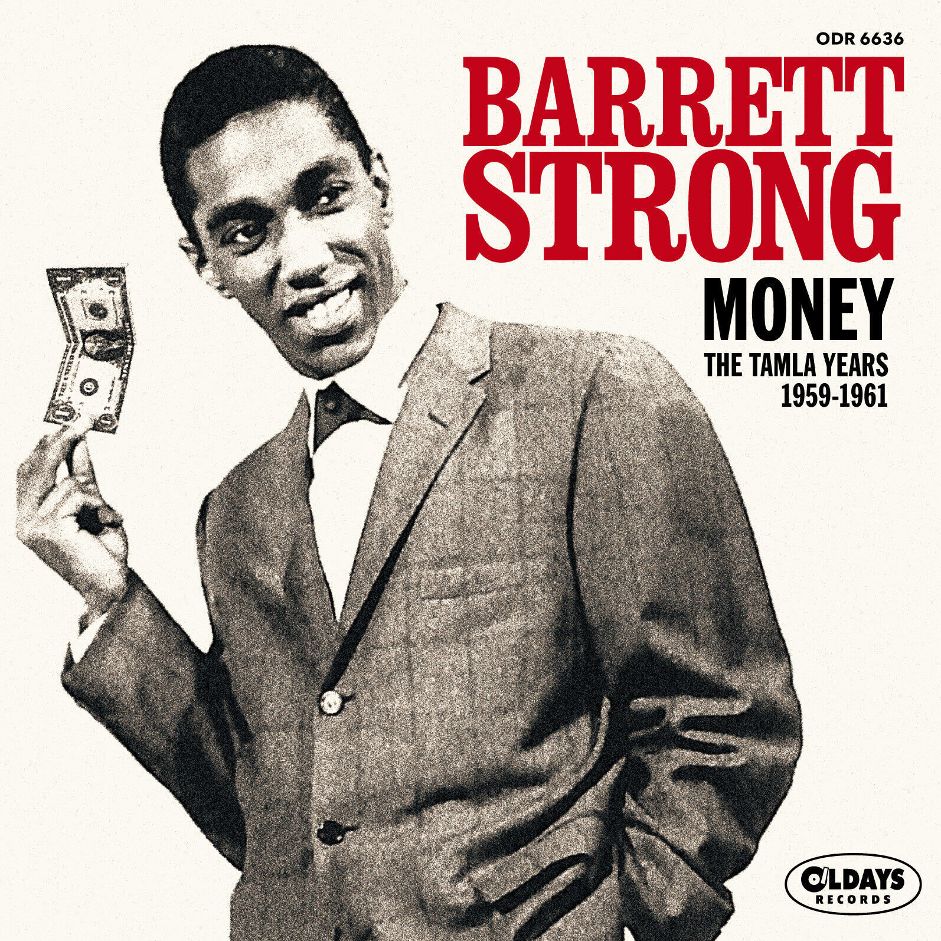 The Beatles may not have been the first to utilize this gimmick (witness the piano riff on “Money (That’s What I Want),” but the group was the first to make it fashionable and trendsetting, as everyone, it seemed, was bent on imitating the formula The Beatles were using. Their trendsetting formula of using the 'two measure guitar riff' was heard first on the John Lennon rocker “You Can’t Do That.” The Beatles may not have been the first to utilize this gimmick (witness the piano riff on “Money (That’s What I Want),” but the group was the first to make it fashionable and trendsetting, as everyone, it seemed, was bent on imitating the formula The Beatles were using. Their trendsetting formula of using the 'two measure guitar riff' was heard first on the John Lennon rocker “You Can’t Do That.”
Songwriting History
 “Paul and I enjoyed writing the music for the film, but there were times when we honestly thought we’d never get time to write all the material,” Lennon said in 1964 about writing the songs for their movie “A Hard Day’s Night.” "You Can't Do That" was one of those songs. “Paul and I enjoyed writing the music for the film, but there were times when we honestly thought we’d never get time to write all the material,” Lennon said in 1964 about writing the songs for their movie “A Hard Day’s Night.” "You Can't Do That" was one of those songs.
George Harrison stated in an interview at the time that "'You Can't Do That' was written in Miami Beach." This would mean that the writing occurred between February 13th and 21st, 1964 during their first visit to America. "You Can't Do That" was intended for the film, but it was cut out of the movie at the last minute.
 Both John and Paul have acknowledged in interviews that “You Can’t Do That” was written entirely by Lennon. Since their contract with EMI was signed in 1962, they had concentrated mostly on collaboration but, with McCartney securing for himself the a-side for the next single with the self-penned “Can’t Buy Me Love,” which was written and recorded weeks earlier, this presumably was the catalyst for Lennon to push ahead and concentrate heavily on solo songwriting throughout the rest of 1964. “You Can’t Do That” was the first fruits of this determination. Both John and Paul have acknowledged in interviews that “You Can’t Do That” was written entirely by Lennon. Since their contract with EMI was signed in 1962, they had concentrated mostly on collaboration but, with McCartney securing for himself the a-side for the next single with the self-penned “Can’t Buy Me Love,” which was written and recorded weeks earlier, this presumably was the catalyst for Lennon to push ahead and concentrate heavily on solo songwriting throughout the rest of 1964. “You Can’t Do That” was the first fruits of this determination.
 Concerning the song’s inspiration, John Lennon stated in 1980, as featured in David Sheff's book "All We Are Saying," “That’s me doing Wilson Pickett. You know, a cowbell going four-in-the-bar, and the chord going ‘chatoong!’” Hearing this from the horse's mouth, you would think, would settle the issue. Unfortunately, this is not the case. The problem is that Wilson Pickett had not come into his own as of February of 1964 when this song was written. By that time, Wilson Pickett had only released four early singles, these being ballads in a 6/8 time signature. This was quite unlike anything he’s become known for, such as “In The Midnight Hour” and “Mustang Sally,” which were much closer to what Lennon was talking about. Those early ballads definitely didn’t have a cowbell or anything resembling a “chatoong.” John Lennon was obviously thinking retrospectively and originally found inspiration elsewhere, such as in the R&B classics coming out of Memphis at the time. Confirmation of where the true inspiration actually came from may never be known. Concerning the song’s inspiration, John Lennon stated in 1980, as featured in David Sheff's book "All We Are Saying," “That’s me doing Wilson Pickett. You know, a cowbell going four-in-the-bar, and the chord going ‘chatoong!’” Hearing this from the horse's mouth, you would think, would settle the issue. Unfortunately, this is not the case. The problem is that Wilson Pickett had not come into his own as of February of 1964 when this song was written. By that time, Wilson Pickett had only released four early singles, these being ballads in a 6/8 time signature. This was quite unlike anything he’s become known for, such as “In The Midnight Hour” and “Mustang Sally,” which were much closer to what Lennon was talking about. Those early ballads definitely didn’t have a cowbell or anything resembling a “chatoong.” John Lennon was obviously thinking retrospectively and originally found inspiration elsewhere, such as in the R&B classics coming out of Memphis at the time. Confirmation of where the true inspiration actually came from may never be known.
 One thing that has been established is the honest autobiographical nature of the song’s lyrics. “I think a lot of these songs…may have been based in real experiences,” McCartney has related, “or arguments with Cynthia or whatever, but it never occurred to us until later to put that slant on it all.” John’s possessiveness with the women in his life, especially in regards to his first wife Cynthia, has been very well documented in the various biographies of his life. Indications of this jealous tendency can be found throughout his songwriting output within The Beatles, as in "Run For Your Life," as well as his solo career, especially 1971’s “Jealous Guy” from his “Imagine” album. One thing that has been established is the honest autobiographical nature of the song’s lyrics. “I think a lot of these songs…may have been based in real experiences,” McCartney has related, “or arguments with Cynthia or whatever, but it never occurred to us until later to put that slant on it all.” John’s possessiveness with the women in his life, especially in regards to his first wife Cynthia, has been very well documented in the various biographies of his life. Indications of this jealous tendency can be found throughout his songwriting output within The Beatles, as in "Run For Your Life," as well as his solo career, especially 1971’s “Jealous Guy” from his “Imagine” album.
Recording History
 Having just returned to London on February 22nd, 1964 from the band's triumphant first visit to America, The Beatles had a busy schedule ahead of them. Their first film, being untitled at this time, was scheduled to begin shooting on March 2nd, 1964, and songs for the film needed to be fully recorded before the movie could be started. The requirement of seven songs meant they had to get cracking right away, so after filming a television appearance on February 23rd, 1964, they headed to EMI Studio Two on February 25th ready for work. Having just returned to London on February 22nd, 1964 from the band's triumphant first visit to America, The Beatles had a busy schedule ahead of them. Their first film, being untitled at this time, was scheduled to begin shooting on March 2nd, 1964, and songs for the film needed to be fully recorded before the movie could be started. The requirement of seven songs meant they had to get cracking right away, so after filming a television appearance on February 23rd, 1964, they headed to EMI Studio Two on February 25th ready for work.
 There were two recording sessions on February 25th (George Harrison's 21st birthday), the first running from 10 am to 1 pm, which was devoted entirely to the month old “You Can’t Do That.” The band played the song live on mostly newly acquired instruments: Lennon's brand new Rickenbacker 325 that was built especially for him, Ringo's second Ludwig drum kit, and Harrison's new Rickenbacker 360-12 string guitar (Paul's 1963 Hofner bass had been in use in the studio since "I Want To Hold Your Hand"). George's Rickenbacker 12-string guitar (the second one ever produced, worth around $900 in 1964) was acquired in New York City on February 8th, 1964 while sick in bed at the Plaza Hotel the day before the group's first appearance on The Ed Sullivan Show, Rickenbacker owner and President Francis Hall bringing it to the hotel room for George to get acquanited with. "You Can't Do That" was the first Beatles song to feature a 12-string guitar, the introductory and concluding guitar riff being written by George in the studio on that day. When asked by musician Tom Petty how he came up with this riff, as detailed in the December Rolling Stone "100 Greatest Guitarists" issue, George responded, "I was just standing there (in the studio) and thought, 'I've got to do something.'" There were two recording sessions on February 25th (George Harrison's 21st birthday), the first running from 10 am to 1 pm, which was devoted entirely to the month old “You Can’t Do That.” The band played the song live on mostly newly acquired instruments: Lennon's brand new Rickenbacker 325 that was built especially for him, Ringo's second Ludwig drum kit, and Harrison's new Rickenbacker 360-12 string guitar (Paul's 1963 Hofner bass had been in use in the studio since "I Want To Hold Your Hand"). George's Rickenbacker 12-string guitar (the second one ever produced, worth around $900 in 1964) was acquired in New York City on February 8th, 1964 while sick in bed at the Plaza Hotel the day before the group's first appearance on The Ed Sullivan Show, Rickenbacker owner and President Francis Hall bringing it to the hotel room for George to get acquanited with. "You Can't Do That" was the first Beatles song to feature a 12-string guitar, the introductory and concluding guitar riff being written by George in the studio on that day. When asked by musician Tom Petty how he came up with this riff, as detailed in the December Rolling Stone "100 Greatest Guitarists" issue, George responded, "I was just standing there (in the studio) and thought, 'I've got to do something.'"
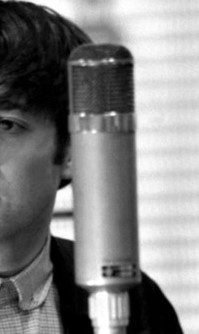 Lennon sang lead vocals live along with rhythm guitar, as well as the guitar solo, during the takes recorded at this recording session. Four complete takes were taped, along with five false starts, before everyone was satisfied. One of these complete takes, "take six," was included on “Anthology 1” which shows John as the only one singing at this point. This is not a “guide vocal” as authors claim, but their usual practice of getting a perfect recording live. Lennon sang lead vocals live along with rhythm guitar, as well as the guitar solo, during the takes recorded at this recording session. Four complete takes were taped, along with five false starts, before everyone was satisfied. One of these complete takes, "take six," was included on “Anthology 1” which shows John as the only one singing at this point. This is not a “guide vocal” as authors claim, but their usual practice of getting a perfect recording live.
A decision was made to include backing vocals from Paul and George, so by "take nine," which ended up being the keeper, all three vocalists were singing live on this basic recording. Onto this "take" they performed three overdubs, these being Paul on cowbell throughout the song, Ringo on bongos, and John double-tracking his vocals during the bridges. This then was used as the finished master version of the song.
 George Martin wasted no time in creating the mono mix for the song. The next day, February 26th, George Martin and engineers Norman Smith and Richard Langham reserved a morning session (10 am to 1 pm) to perfect the mono mix of “You Can’t Do That” and “Can’t Buy Me Love,” which were dutifully shipped off to Capitol Records in the US for their next single release. George Martin held off Capitol releasing “Roll Over Beethoven” as the next American single with promises of something great, so he didn’t waste any time getting these new masters sent to Capitol as soon as possible. It took four remix attempts at “You Can’t Do That” to get it right, but it thereafter served as the mono mix heard everywhere to this day. George Martin wasted no time in creating the mono mix for the song. The next day, February 26th, George Martin and engineers Norman Smith and Richard Langham reserved a morning session (10 am to 1 pm) to perfect the mono mix of “You Can’t Do That” and “Can’t Buy Me Love,” which were dutifully shipped off to Capitol Records in the US for their next single release. George Martin held off Capitol releasing “Roll Over Beethoven” as the next American single with promises of something great, so he didn’t waste any time getting these new masters sent to Capitol as soon as possible. It took four remix attempts at “You Can’t Do That” to get it right, but it thereafter served as the mono mix heard everywhere to this day.
 The Beatles wasted no time promoting this new song, recording it for BBC radio only three days after they officially recorded it at EMI Studios. On February 28th, 1964, almost a month before the song was released in Britain, they entered Studio One of BBC Piccadilly Studios in London to record the song between 6:30 and 9 pm for the second installment of the band's radio show “From Us To You,” this program being produced by Bryant Marriott and broadcast on March 30th of that year between 10 am and 12 noon. The Beatles wasted no time promoting this new song, recording it for BBC radio only three days after they officially recorded it at EMI Studios. On February 28th, 1964, almost a month before the song was released in Britain, they entered Studio One of BBC Piccadilly Studios in London to record the song between 6:30 and 9 pm for the second installment of the band's radio show “From Us To You,” this program being produced by Bryant Marriott and broadcast on March 30th of that year between 10 am and 12 noon.
March 10th, 1964 saw George Martin and Norman Smith for some unknown reason performing a stereo mix of the song (along with six other mixes) that was experimental and never used.
 On March 31st, 1964, The Beatles lip-synced the song during the “television performance” sequence of the film before 350 screaming fans assembled at the Scala Theatre in London. Phil Collins (of Genesis fame) was one of the 350 fans that day who recalls “You Can’t Do That” being part of that performance. This selection may have been cut from the film, as mentioned above, but this sequence was broadcast on The Ed Sullivan Show on May 24th, 1964 and is featured in the 1994 video “The Making Of A Hard Day’s Night,” hosted by Phil Collins. On March 31st, 1964, The Beatles lip-synced the song during the “television performance” sequence of the film before 350 screaming fans assembled at the Scala Theatre in London. Phil Collins (of Genesis fame) was one of the 350 fans that day who recalls “You Can’t Do That” being part of that performance. This selection may have been cut from the film, as mentioned above, but this sequence was broadcast on The Ed Sullivan Show on May 24th, 1964 and is featured in the 1994 video “The Making Of A Hard Day’s Night,” hosted by Phil Collins.
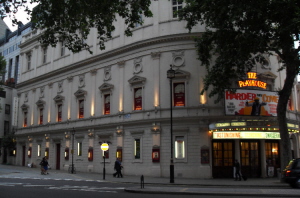 Later that same day, on March 31st, 1964, The Beatles brought "You Can't Do That" back for more BBC radio recordings at The Playhouse Theatre in London between 7 and 10:30 pm. This recording was made specifically for broadcast on the popular "Saturday Club" show, which was produced by Jimmy Grant and Bernie Andrews and broadcast on April 4th between 10 am and 12 noon. Then on May 1st, 1964 they recorded the song at BBC Paris Studio in London between 6:30 and 9:30 pm for the third edition of "From Us To You," which was produced by Bryant Marriott and broadcast on May 18th, 1964 between 10 am and 12 noon. Later that same day, on March 31st, 1964, The Beatles brought "You Can't Do That" back for more BBC radio recordings at The Playhouse Theatre in London between 7 and 10:30 pm. This recording was made specifically for broadcast on the popular "Saturday Club" show, which was produced by Jimmy Grant and Bernie Andrews and broadcast on April 4th between 10 am and 12 noon. Then on May 1st, 1964 they recorded the song at BBC Paris Studio in London between 6:30 and 9:30 pm for the third edition of "From Us To You," which was produced by Bryant Marriott and broadcast on May 18th, 1964 between 10 am and 12 noon.
 Also, interestingly, George Martin entered EMI Studio Two on May 22nd, 1964, well after the British and American release of the song as a single, to record a piano overdub to the official EMI recording of "You Can't Do That," which took the song to “take 10.” What his intentions were are unknown, but this overdub was shelved and never heard by the public. Also, interestingly, George Martin entered EMI Studio Two on May 22nd, 1964, well after the British and American release of the song as a single, to record a piano overdub to the official EMI recording of "You Can't Do That," which took the song to “take 10.” What his intentions were are unknown, but this overdub was shelved and never heard by the public.
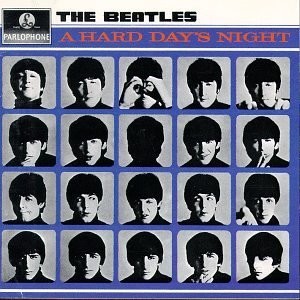 At the very last minute as usual, George Martin oversaw the true stereo mix of the song on June 22nd, 1964, using “take nine” so as to forgo the piano overdub done on May 22nd, 1964. This was done just in time for the British album release of “A Hard Day’s Night” on July 10th, 1964 and was the only stereo mix of the song released, but not yet in America. Since “You Can’t Do That” was featured on the US album “The Beatles’ Second Album,” and only a mono mix existed at that time of its release (April 10th, 1964), Capitol Records created a duophonic (fake stereo) version of the song for the stereo master of the album. The true stereo mix, however, contains the rhythm track (drums, bass and George's guitar) mostly in the left channel with John's rhythm guitar and solo mostly in the right channel. All the vocals are centered in the mix. At the very last minute as usual, George Martin oversaw the true stereo mix of the song on June 22nd, 1964, using “take nine” so as to forgo the piano overdub done on May 22nd, 1964. This was done just in time for the British album release of “A Hard Day’s Night” on July 10th, 1964 and was the only stereo mix of the song released, but not yet in America. Since “You Can’t Do That” was featured on the US album “The Beatles’ Second Album,” and only a mono mix existed at that time of its release (April 10th, 1964), Capitol Records created a duophonic (fake stereo) version of the song for the stereo master of the album. The true stereo mix, however, contains the rhythm track (drums, bass and George's guitar) mostly in the left channel with John's rhythm guitar and solo mostly in the right channel. All the vocals are centered in the mix.
Their fourth and final BBC radio recording of the song took place on July 14th, 1964 in Studios B7/S2 of Broadcasting House in London between 7 and 11 pm for the radio show “Top Gear,” which was produced by Bernie Andrews and broadcast on July 16th, 1964 between 10 and 11:55 pm.
 Another recording of "You Can't Do That" occurred on August 23rd, 1964 at their performance at the legendary Hollywood Bowl in Los Angeles. Capitol Records desired to record the group live in order to release as a US-only album, since George Martin vetoed that idea for release in the UK. It was reluctantly co-produced by George Martin and American producer Voyle Gilmore with Hugh Davies as engineer. The album didn’t get released at the time because of the disapproval of The Beatles and Capitol Records due to the poor quality of the recording. Although a revamped version of the album did get released internationally in 1977 as “The Beatles At The Hollywood Bowl,” the song “You Can’t Do That” was cut from the track list. Another recording of "You Can't Do That" occurred on August 23rd, 1964 at their performance at the legendary Hollywood Bowl in Los Angeles. Capitol Records desired to record the group live in order to release as a US-only album, since George Martin vetoed that idea for release in the UK. It was reluctantly co-produced by George Martin and American producer Voyle Gilmore with Hugh Davies as engineer. The album didn’t get released at the time because of the disapproval of The Beatles and Capitol Records due to the poor quality of the recording. Although a revamped version of the album did get released internationally in 1977 as “The Beatles At The Hollywood Bowl,” the song “You Can’t Do That” was cut from the track list.
 The Beatles did revive the song briefly in the studio during their infamous “Get Back / Let It Be” sessions. The second day of taped rehearsals in Twickenham Studios on January 3rd, 1969, saw The Beatles go over the song again after nearly four and a half years of it not being touched. The Beatles did revive the song briefly in the studio during their infamous “Get Back / Let It Be” sessions. The second day of taped rehearsals in Twickenham Studios on January 3rd, 1969, saw The Beatles go over the song again after nearly four and a half years of it not being touched.
 Sometime in 2016, Giles Martin, George Martin's son, aquired access to the live recording of "You Can't Do That" that the group performed at the Hollywood Bowl on August 23rd, 1964. From this, he produced a magnificent version of the song to be used as a bonus track on the long-awaited re-release of "Live At The Hollywood Bowl." Sometime in 2016, Giles Martin, George Martin's son, aquired access to the live recording of "You Can't Do That" that the group performed at the Hollywood Bowl on August 23rd, 1964. From this, he produced a magnificent version of the song to be used as a bonus track on the long-awaited re-release of "Live At The Hollywood Bowl."
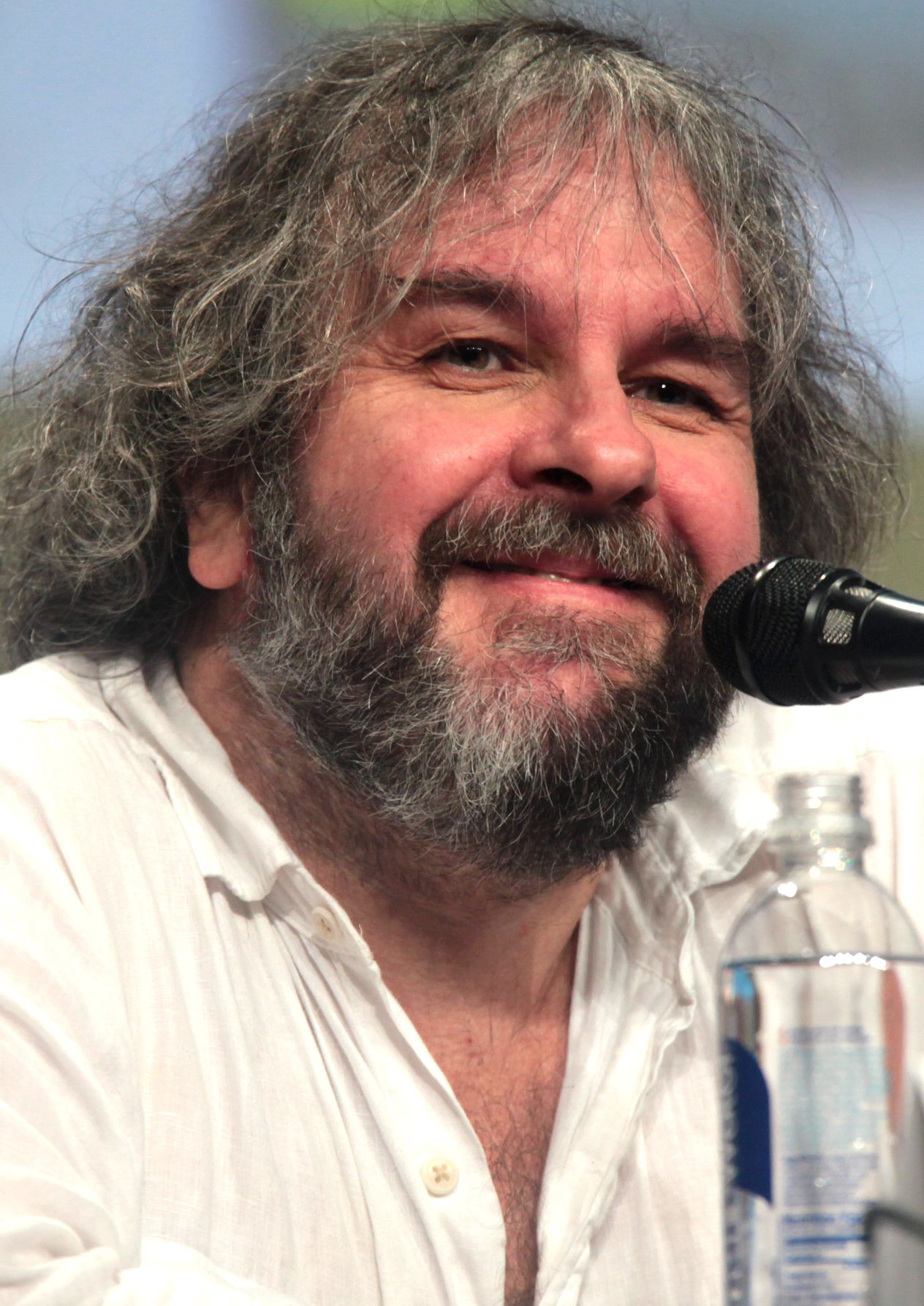 Sometime during 2023, Giles Martin was given the task of creating a "demix remix" of "You Can't Do That" for inclusion on the 50th Anniversary edition of the compilation album "The Beatles / 1962 - 1966" (aka "The Red Album"). With Peter Jackson's AI technology at his disposal, Giles Martin was able to utilize this "new machine-learning techology" so that "individual elements that were put to tape...and were therefore impossible to separate" could now be "untangled, allowing Giles (Martin) to put the original recordings back together with even greater clarity and impact," as stated by John Harris in the liner notes of the above mentioned album. The "clarity and impact" is especially witnessed here on "You Can't Do That," which is arguably the best presentation of the song to date. Sometime during 2023, Giles Martin was given the task of creating a "demix remix" of "You Can't Do That" for inclusion on the 50th Anniversary edition of the compilation album "The Beatles / 1962 - 1966" (aka "The Red Album"). With Peter Jackson's AI technology at his disposal, Giles Martin was able to utilize this "new machine-learning techology" so that "individual elements that were put to tape...and were therefore impossible to separate" could now be "untangled, allowing Giles (Martin) to put the original recordings back together with even greater clarity and impact," as stated by John Harris in the liner notes of the above mentioned album. The "clarity and impact" is especially witnessed here on "You Can't Do That," which is arguably the best presentation of the song to date.
Song Structure and Style
 The song “You Can’t Do That” follows a typical 12-bar blues pattern for the verses along with an eight measure bridge formed in a verse/verse/bridge/verse (or aaba) structure typical for Lennon / McCartney compositions up to this point. A solo section is included following the verse structure, followed by an additional bridge and verse before the song closes. The song “You Can’t Do That” follows a typical 12-bar blues pattern for the verses along with an eight measure bridge formed in a verse/verse/bridge/verse (or aaba) structure typical for Lennon / McCartney compositions up to this point. A solo section is included following the verse structure, followed by an additional bridge and verse before the song closes.
We start out with a four measure intro which introduces the landmark two-measure guitar riff in the first two measures. This riff is then repeated for the remaining two measures of the introduction joined by the rest of the band, cowbell and bongos included.
 We then enter into the first 12-measure verse, highlighted by a melody line that puts emphasis on the quarter notes of the measures. Lennon’s voice is single-tracked, which suits the intimate address of the lyrics perfectly. The surprise twist of the verse structure comes on the ninth measure, which shows all instruments and vocals performing staccato eighth notes on the phrase “told you before” on the D7th chord with Lennon supplying a discordant sharp 9th vocally. This is followed by the signature "Beatles break" used in a lot of the early Beatles songs, but this time only lasts for a solitary eighth note before the drums kick back in followed by the vocals, which highlight the key phrase of the song, “Oh, you can’t do that” on the tenth measure. The twelfth measure takes us back to the D chord, which is a perfect segue into another verse. We then enter into the first 12-measure verse, highlighted by a melody line that puts emphasis on the quarter notes of the measures. Lennon’s voice is single-tracked, which suits the intimate address of the lyrics perfectly. The surprise twist of the verse structure comes on the ninth measure, which shows all instruments and vocals performing staccato eighth notes on the phrase “told you before” on the D7th chord with Lennon supplying a discordant sharp 9th vocally. This is followed by the signature "Beatles break" used in a lot of the early Beatles songs, but this time only lasts for a solitary eighth note before the drums kick back in followed by the vocals, which highlight the key phrase of the song, “Oh, you can’t do that” on the tenth measure. The twelfth measure takes us back to the D chord, which is a perfect segue into another verse.
 The second verse contains some subtle but interesting changes, one being the melody line that now focuses on eighth notes instead of quarter notes. The second change is the appearance of answering backing vocals from Paul and George starting from the sixth measure. The verse ends identically as the first did except for staying on the G chord to propel them into the bridge. The second verse contains some subtle but interesting changes, one being the melody line that now focuses on eighth notes instead of quarter notes. The second change is the appearance of answering backing vocals from Paul and George starting from the sixth measure. The verse ends identically as the first did except for staying on the G chord to propel them into the bridge.
 The unpredictable chord changes in this eight measure bridge snake along with the bluesy melody line and background vocals to generate an engaging vibe. The seventh and eighth measures display the jabbing staccato eighth notes heard in the verses, which move the song nicely back to the third and final verse of the pattern. The unpredictable chord changes in this eight measure bridge snake along with the bluesy melody line and background vocals to generate an engaging vibe. The seventh and eighth measures display the jabbing staccato eighth notes heard in the verses, which move the song nicely back to the third and final verse of the pattern.
 This third verse has a completely different set of lyrics, unlike The Beatles' tendency to just repeat the first verse again (witness “Please Please Me” and “From Me To You”). This new verse needed to be different in order to show the finality of the story with a pleading “so please listen to me if you want to stay mine.” John Lennon was truly proud of this song and it shows; no cutting-corners for this one. This third verse has a completely different set of lyrics, unlike The Beatles' tendency to just repeat the first verse again (witness “Please Please Me” and “From Me To You”). This new verse needed to be different in order to show the finality of the story with a pleading “so please listen to me if you want to stay mine.” John Lennon was truly proud of this song and it shows; no cutting-corners for this one.
This third verse reverts back to ending in a D chord as a segue into the solo section of the song, this solo working as a complete instrumental rendition of the verse. Lennon himself steps out for the first time on record playing lead guitar, creating tension while the background vocals chant along the title of the song.
 Then we hear a reprise of the bridge and third verse as it ends with a surprising but suitably subdued conclusion in lead guitar/bass unison. John was quite proud of the conclusion to this song. "The break at the end of the record? That's George with his 12-string doing that bit," Lennon stated at the time. "Isn't it a great sound? Like a piano." Then we hear a reprise of the bridge and third verse as it ends with a surprising but suitably subdued conclusion in lead guitar/bass unison. John was quite proud of the conclusion to this song. "The break at the end of the record? That's George with his 12-string doing that bit," Lennon stated at the time. "Isn't it a great sound? Like a piano."
"You Can't Do That" is a remarkably heavy performance that is unmatched by anything The Beatles had produced thus far, but standing as a harbinger of heavier things to come.
 As stated earlier, these lyrics are frank and autobiographical in nature, expressing to the world the insecurities the composer lives with and the struggles of those he’s closest to. He doesn't express these feelings in an apologetic way, but aggressively and in a justifiably demanding way. His girl is not allowed to be caught even innocently “talking” to another “boy” if she doesn’t want to be ‘let down’ and ‘left flat.’ He goes as far as saying that he thinks “it’s a sin” and is, in effect, the last straw. As stated earlier, these lyrics are frank and autobiographical in nature, expressing to the world the insecurities the composer lives with and the struggles of those he’s closest to. He doesn't express these feelings in an apologetic way, but aggressively and in a justifiably demanding way. His girl is not allowed to be caught even innocently “talking” to another “boy” if she doesn’t want to be ‘let down’ and ‘left flat.’ He goes as far as saying that he thinks “it’s a sin” and is, in effect, the last straw.
 Lennon uses the bridge to justify his demand by explaining that “everybody’s green” with envy about him winning her in the first place. Therefore he fears being laughed at by onlookers if the appearance shows she might be interested in someone else. This insecurity has taken hold of him to the point of saying, in the final verse, “I can’t help my feelings” and that they are driving him ‘out of his mind.’ As revealed in various biographies of his life, the demanding ways Lennon showed in his relationships with the women of his life, Yoko Ono included, attest to this song being a true-to-life testimony of what he expected of them. In hindsight, Paul himself recognized this to be true. Lennon uses the bridge to justify his demand by explaining that “everybody’s green” with envy about him winning her in the first place. Therefore he fears being laughed at by onlookers if the appearance shows she might be interested in someone else. This insecurity has taken hold of him to the point of saying, in the final verse, “I can’t help my feelings” and that they are driving him ‘out of his mind.’ As revealed in various biographies of his life, the demanding ways Lennon showed in his relationships with the women of his life, Yoko Ono included, attest to this song being a true-to-life testimony of what he expected of them. In hindsight, Paul himself recognized this to be true.
 The composer definitely shines on this track, not only as lead vocalist but as lead guitarist. John explained in Melody Maker in 1964: “I find it a drag to play rhythm all the time, so I always work myself out something interesting to play. The best example I can think of is like I did on ‘You Can’t Do That.’ There really isn't a lead guitarist and rhythm guitarist on that, because I feel the rhythm guitarist role sounds too thin for records. Anyway, it drove me potty to play chunk-chunk rhythm all the time. I never play anything as lead guitarist that George couldn't do better. But I like playing lead sometimes, so I do it.” Lennon hammers out a wiry solo, which incorporates elements of rhythm guitar, to produce something George Harrison wouldn’t have been able to devise. John nails it vocally as well, performing a rough but convincing bluesy growl deserving of being the standout vocal track on the album. The composer definitely shines on this track, not only as lead vocalist but as lead guitarist. John explained in Melody Maker in 1964: “I find it a drag to play rhythm all the time, so I always work myself out something interesting to play. The best example I can think of is like I did on ‘You Can’t Do That.’ There really isn't a lead guitarist and rhythm guitarist on that, because I feel the rhythm guitarist role sounds too thin for records. Anyway, it drove me potty to play chunk-chunk rhythm all the time. I never play anything as lead guitarist that George couldn't do better. But I like playing lead sometimes, so I do it.” Lennon hammers out a wiry solo, which incorporates elements of rhythm guitar, to produce something George Harrison wouldn’t have been able to devise. John nails it vocally as well, performing a rough but convincing bluesy growl deserving of being the standout vocal track on the album.
 Paul and George’s background harmonies are more shouted than sung, but it works to create the rough energy that is necessitated by the lyrics. George Harrison's new 12-string is heard prominently in the main riff of the song, which is performed to perfection. He otherwise may have been relegated to rhythm guitar on this track, but it is played with great attentiveness to the feel of the song, which can also be said of McCartney’s bass work, although it is quite low in the mix. Ringo rides primarily on the hi-hat throughout while not providing any variance from his rock beat apart from his accents at the end of each verse. The Beatles as a whole produce an unpolished masterpiece. Paul and George’s background harmonies are more shouted than sung, but it works to create the rough energy that is necessitated by the lyrics. George Harrison's new 12-string is heard prominently in the main riff of the song, which is performed to perfection. He otherwise may have been relegated to rhythm guitar on this track, but it is played with great attentiveness to the feel of the song, which can also be said of McCartney’s bass work, although it is quite low in the mix. Ringo rides primarily on the hi-hat throughout while not providing any variance from his rock beat apart from his accents at the end of each verse. The Beatles as a whole produce an unpolished masterpiece.
American Releases
 The first appearance of “You Can’t Do That” in the states was on March 16th, 1964 (four days before it was released in Britain) as the b-side to “Can’t Buy Me Love.” The picture sleeve Capitol used for the single contained the same Dezo Hoffmann picture that was used for their first Capitol single “I Want To Hold Your Hand.” As the a-side of the single raced to #1 on the Billboard Hot 100 (only taking two weeks to do so), the b-side peaked at the respectable position of #48. The first appearance of “You Can’t Do That” in the states was on March 16th, 1964 (four days before it was released in Britain) as the b-side to “Can’t Buy Me Love.” The picture sleeve Capitol used for the single contained the same Dezo Hoffmann picture that was used for their first Capitol single “I Want To Hold Your Hand.” As the a-side of the single raced to #1 on the Billboard Hot 100 (only taking two weeks to do so), the b-side peaked at the respectable position of #48.
 Interestingly, the Savoy printing plant was asked by Capitol to help with the pressing of this fast selling single. They printed a small amount of these singles on yellow / black vinyl, as well as straight yellow vinyl, as souvenirs, all of these being highly collectable today. Interestingly, the Savoy printing plant was asked by Capitol to help with the pressing of this fast selling single. They printed a small amount of these singles on yellow / black vinyl, as well as straight yellow vinyl, as souvenirs, all of these being highly collectable today.
 The next appearance was less than a month later (April 10th, 1964) on the Capitol LP “The Beatles’ Second Album.” Capitol was then enjoying the chart success of The Beatles’ latest single “Can’t Buy Me Love” but could not include the song on this album because it was earmarked for the upcoming movie soundtrack for “A Hard Day’s Night,” which was then licensed to United Artists Records for album release. Since it had been determined at this point that the singles' b-side, “You Can’t Do That,” would not be on that soundtrack album, they could include it here. The next appearance was less than a month later (April 10th, 1964) on the Capitol LP “The Beatles’ Second Album.” Capitol was then enjoying the chart success of The Beatles’ latest single “Can’t Buy Me Love” but could not include the song on this album because it was earmarked for the upcoming movie soundtrack for “A Hard Day’s Night,” which was then licensed to United Artists Records for album release. Since it had been determined at this point that the singles' b-side, “You Can’t Do That,” would not be on that soundtrack album, they could include it here.
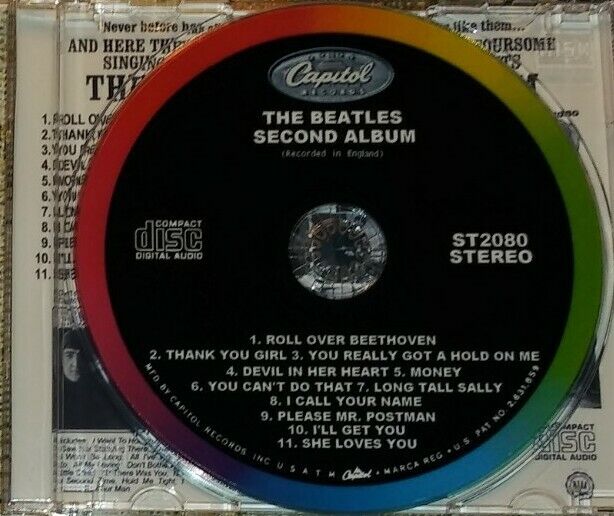 Capitol was so anxious to release this album that they decided not to wait for a stereo mix of the song. All they had was the mono mix that was used for the single. In order to get the ball rolling, they released the album with the track in mono only, creating a duophonic stereo mix for use on the stereo copies of the album. Therefore, most treble frequencies are heard on one channel while all of the bass frequencies appear on the other. Even though George Martin did create a stereo mix on June 22nd, 1964, Capitol never bothered to replace the duophonic version all the time that “The Beatles’ Second Album” was in print. On January 21st, 2014, this album was released as an individual compact disc for the first time, the mono and stereo mixes being contained on a single CD. Capitol was so anxious to release this album that they decided not to wait for a stereo mix of the song. All they had was the mono mix that was used for the single. In order to get the ball rolling, they released the album with the track in mono only, creating a duophonic stereo mix for use on the stereo copies of the album. Therefore, most treble frequencies are heard on one channel while all of the bass frequencies appear on the other. Even though George Martin did create a stereo mix on June 22nd, 1964, Capitol never bothered to replace the duophonic version all the time that “The Beatles’ Second Album” was in print. On January 21st, 2014, this album was released as an individual compact disc for the first time, the mono and stereo mixes being contained on a single CD.
 The song “You Can’t Do That” was included on a limited edition single entitled “Music City / KFWBeatles,” which was released on June 5th, 1964. This single was created for Wallichs Music City in Canogo Park, California in conjunction with radio station KFWB. Released on “Capitol Custom Services” record label, it was used for promotion of the grand opening of the Wallichs store, being distributed to all those who attended on that day. The song “You Can’t Do That” was included on a limited edition single entitled “Music City / KFWBeatles,” which was released on June 5th, 1964. This single was created for Wallichs Music City in Canogo Park, California in conjunction with radio station KFWB. Released on “Capitol Custom Services” record label, it was used for promotion of the grand opening of the Wallichs store, being distributed to all those who attended on that day.
Side one of this single featured a 1:40 interview segment by The Beatles entitled “The Beatles Talking,” while side two featured the b-side of their recent single. Copies of this disc are highly collectable, especially if preserved in their original tan mailers.
 August 10th, 1964, saw the next release of this song on a compilation album released by Capitol entitled “The Big Hits From England & USA.” Prepared to capitalize on the recent British boom in the US, the album contained both sides of The Beatles’ March single, as well as other British Capitol artists Cilla Black and Peter & Gordon. August 10th, 1964, saw the next release of this song on a compilation album released by Capitol entitled “The Big Hits From England & USA.” Prepared to capitalize on the recent British boom in the US, the album contained both sides of The Beatles’ March single, as well as other British Capitol artists Cilla Black and Peter & Gordon.
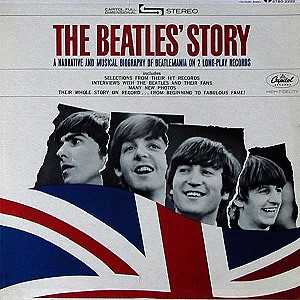 "You Can't Do That" did get a partial American release on the Capitol documentary album, "The Beatles' Story," on the track "Who's A Millionaire?" The double album was released on November 23rd, 1964. Surprisingly, "The Beatles' Story" was also released on compact disc on January 21st., 2014, but only as contained in the 13-album box set "The US Albums." "You Can't Do That" did get a partial American release on the Capitol documentary album, "The Beatles' Story," on the track "Who's A Millionaire?" The double album was released on November 23rd, 1964. Surprisingly, "The Beatles' Story" was also released on compact disc on January 21st., 2014, but only as contained in the 13-album box set "The US Albums."
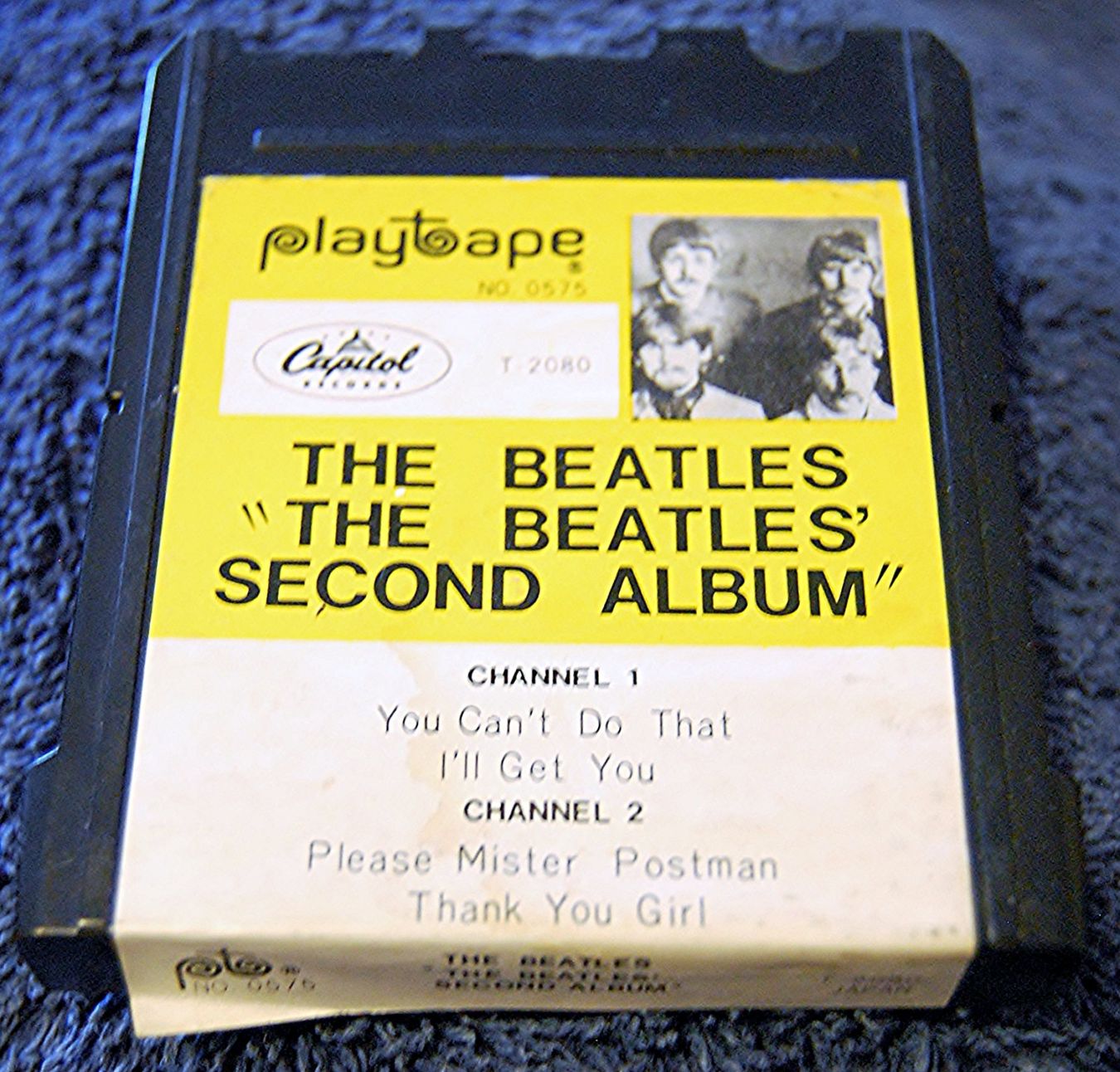 Sometime in 1967, Capitol released Beatles music on a brand new but short-lived format called "Playtapes." These tape cartridges did not have the capability to include entire albums, so two truncated four-song versions of "The Beatles Second Album" were released in this portable format, "You Can't Do That" being on one of these releases. These "Playtapes" are highly collectable today. Sometime in 1967, Capitol released Beatles music on a brand new but short-lived format called "Playtapes." These tape cartridges did not have the capability to include entire albums, so two truncated four-song versions of "The Beatles Second Album" were released in this portable format, "You Can't Do That" being on one of these releases. These "Playtapes" are highly collectable today.
Interestingly, when Capitol released their 8-track version of the album "Beatles '65" in 1969, they included "You Can't Do That" as a bonus track in order to flesh out its eleven songs to twelve, these being more easily divided between the four channels on the tape.
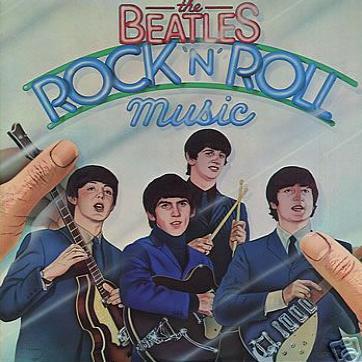 The next release of the song takes us all the way to June 7th, 1976 with the release of the Capitol double album “Rock ‘n’ Roll Music.” This album marks the first time a stereo version of the song was available in the US. The stereo mix of the song made on June 22nd, 1964 graced this album but, because George Martin was thereby consulted regarding the preparation of this album, he decided to reverse the left and right channels. Therefore, the first time American fans could domestically own a stereo version of "You Can't Do That," it was actually a mirror image of the actual original stereo mix as heard in Britain and elsewhere. The next release of the song takes us all the way to June 7th, 1976 with the release of the Capitol double album “Rock ‘n’ Roll Music.” This album marks the first time a stereo version of the song was available in the US. The stereo mix of the song made on June 22nd, 1964 graced this album but, because George Martin was thereby consulted regarding the preparation of this album, he decided to reverse the left and right channels. Therefore, the first time American fans could domestically own a stereo version of "You Can't Do That," it was actually a mirror image of the actual original stereo mix as heard in Britain and elsewhere.
 On October 27th, 1980, the album “Rock ‘n’ Roll Music” was divided into two separate albums, “You Can’t Do That” appearing on “Rock ‘n’ Roll Music, Volume 1.” Once again, the reversed stereo mix can be heard on this album, making this the only American release that contained a stereo version of this song for many years. On October 27th, 1980, the album “Rock ‘n’ Roll Music” was divided into two separate albums, “You Can’t Do That” appearing on “Rock ‘n’ Roll Music, Volume 1.” Once again, the reversed stereo mix can be heard on this album, making this the only American release that contained a stereo version of this song for many years.
 The first time the original British "A Hard Day's Night" album was made available in the US was the "Original Master Recording" vinyl edition released through Mobile Fidelity Sound Lab in February of 1987. This album included "You Can't Do That" and was prepared utilizing half-speed mastering technology from the original master tape on loan from EMI. This version of the album was only available for a short time and is quite collectible today. The first time the original British "A Hard Day's Night" album was made available in the US was the "Original Master Recording" vinyl edition released through Mobile Fidelity Sound Lab in February of 1987. This album included "You Can't Do That" and was prepared utilizing half-speed mastering technology from the original master tape on loan from EMI. This version of the album was only available for a short time and is quite collectible today.
 February 26th, 1987 was the date that the original British "A Hard Day's Night" album was released on compact disc for the first time, a vinyl edition being released on July 21st, 1987. This album was only in mono for many years, but the September 9th, 2009 remastered version restored the stereo mix to its rightful place on CD, a vinyl edition coming out on November 13th, 2012. Gratefully, the stereo version of "You Can't Do That" is now readily available in the US. February 26th, 1987 was the date that the original British "A Hard Day's Night" album was released on compact disc for the first time, a vinyl edition being released on July 21st, 1987. This album was only in mono for many years, but the September 9th, 2009 remastered version restored the stereo mix to its rightful place on CD, a vinyl edition coming out on November 13th, 2012. Gratefully, the stereo version of "You Can't Do That" is now readily available in the US.
 In February of 1994, Capitol reissued the "Can't Buy Me Love / You Can't Do That" single for use in jukeboxes. This 45, which was printed on green vinyl under the Cema series with the words "For Jukeboxes Only" printed on the label, is becoming highly collectable. In February of 1994, Capitol reissued the "Can't Buy Me Love / You Can't Do That" single for use in jukeboxes. This 45, which was printed on green vinyl under the Cema series with the words "For Jukeboxes Only" printed on the label, is becoming highly collectable.
November 21st, 1995 saw the next release of the song on the “Anthology 1” album. "Take six" from the original recording sessions on February 25th, 1964, can be heard in its entirety, which is notable for its lack of background vocals and different lead guitar solo.
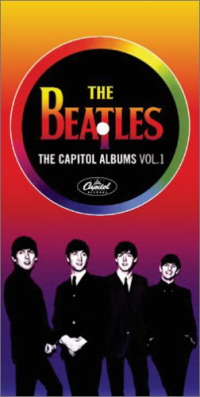 November 15th, 2006 saw the release of a box set titled “The Capitol Albums, Vol. 1,” which contains the song in mono and duophonic stereo as originally heard on "The Beatles' Second Album." November 15th, 2006 saw the release of a box set titled “The Capitol Albums, Vol. 1,” which contains the song in mono and duophonic stereo as originally heard on "The Beatles' Second Album."
The original mono mix was also remastered and then released on September 9th, 2009 in the CD box set "The Beatles In Mono," the vinyl edition being first released on September 9th, 2014.
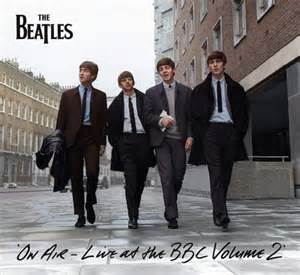 On November 11th, 2013, the album "On Air - Live At The BBC Volume 2" was released, which included yet another BBC version of "You Can't Do That." This version was recorded on July 14th, 1964 for the radio program "Top Gear." On November 11th, 2013, the album "On Air - Live At The BBC Volume 2" was released, which included yet another BBC version of "You Can't Do That." This version was recorded on July 14th, 1964 for the radio program "Top Gear."
 On July 24th, 2012, the iTunes Store, in partnership with EMI Records, released a new Beatles compilation album entitled "Tomorrow Never Knows," the purpose of which was to highlight the group's influence on the history of rock music. The album had the approval of Paul and Ringo, as well as the board of directors for the estates of John and George, and was successful enough to peak at #24 on the Billboard album chart. "You Can't Do That" was a unique but fitting choice for this release. On July 24th, 2012, the iTunes Store, in partnership with EMI Records, released a new Beatles compilation album entitled "Tomorrow Never Knows," the purpose of which was to highlight the group's influence on the history of rock music. The album had the approval of Paul and Ringo, as well as the board of directors for the estates of John and George, and was successful enough to peak at #24 on the Billboard album chart. "You Can't Do That" was a unique but fitting choice for this release.
 On September 9th, 2016, the long-awaited remastered release of "Live At The Hollywood Bowl" became available, Giles Martin taking those original tapes and bringing them to life as never heard before. Their Hollywood Bowl performance of "You Can't Do That" from August 23rd, 1964 was included on this release as a bonus track. On September 9th, 2016, the long-awaited remastered release of "Live At The Hollywood Bowl" became available, Giles Martin taking those original tapes and bringing them to life as never heard before. Their Hollywood Bowl performance of "You Can't Do That" from August 23rd, 1964 was included on this release as a bonus track.
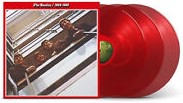 A 50th Anniversay edition of the compilation album "The Beatles / 1962 - 1966" (aka "The Red Album") was released on November 10th, 2023. This expanded release included 12 additional songs for a total of 38 tracks, including the new mix of "You Can't Do That" detailed above, and was made available as a double CD and as a triple vinyl release on both black and red vinyl. A 50th Anniversay edition of the compilation album "The Beatles / 1962 - 1966" (aka "The Red Album") was released on November 10th, 2023. This expanded release included 12 additional songs for a total of 38 tracks, including the new mix of "You Can't Do That" detailed above, and was made available as a double CD and as a triple vinyl release on both black and red vinyl.
Live Performances
 The Beatles wasted no time in including "You Can't Do That" in their live performances. Its performance life began as early as February 28th, 1964, almost a month before the song was released in Britain, on the BBC radio show “From Us To You” detailed above under the heading "Recording History." The Beatles premiered the song on British television on the March 20th, 1964 live broadcast of “Ready Steady Go,” as well as the March 25th, 1964 edition of “Top Of The Pops.” The Beatles wasted no time in including "You Can't Do That" in their live performances. Its performance life began as early as February 28th, 1964, almost a month before the song was released in Britain, on the BBC radio show “From Us To You” detailed above under the heading "Recording History." The Beatles premiered the song on British television on the March 20th, 1964 live broadcast of “Ready Steady Go,” as well as the March 25th, 1964 edition of “Top Of The Pops.”
 April 26th, 1964 saw them perform the song at the New Musical Express Poll-Winners’ Concert, and then it remained in their set list throughout their 1964 world tour, this being the second selection after "Twist And Shout." During the American leg of this tour, “You Can’t Do That” was always performed as the second song after “Twist And Shout.” After the tour was over, the song was retired from their set list. April 26th, 1964 saw them perform the song at the New Musical Express Poll-Winners’ Concert, and then it remained in their set list throughout their 1964 world tour, this being the second selection after "Twist And Shout." During the American leg of this tour, “You Can’t Do That” was always performed as the second song after “Twist And Shout.” After the tour was over, the song was retired from their set list.
Conclusion
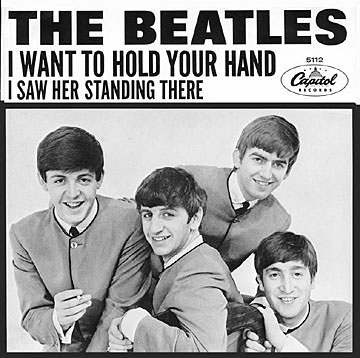 From its opening guitar riff to its surprisingly unique subdued conclusion, “You Can’t Do That” displayed a very new direction for The Beatles' music. They had taken the subject matter from "I Want To Hold Your Hand" to describing a "controlling jealousy" while still encompassing the subject of relationships that permeated the Lennon / McCartney lyrics up until then. They showed within this composition that the future was endless; they were broadening their horizon. From its opening guitar riff to its surprisingly unique subdued conclusion, “You Can’t Do That” displayed a very new direction for The Beatles' music. They had taken the subject matter from "I Want To Hold Your Hand" to describing a "controlling jealousy" while still encompassing the subject of relationships that permeated the Lennon / McCartney lyrics up until then. They showed within this composition that the future was endless; they were broadening their horizon.
 The Beatles were rightly proud of “You Can’t Do That,” the group performing it to perfection on every occasion. No funny faces or "spastic" acts from Lennon, but in absolute seriousness. When asked during a 1964 interview which Beatles song George Harrison admired most, he unhesitatingly proclaimed, “I like ‘You Can’t Do That,' personally.” The song may not have become as popular as they’d have liked it to become, but it stands to Beatles' fans as a highly respected b-side and album track. The Beatles were rightly proud of “You Can’t Do That,” the group performing it to perfection on every occasion. No funny faces or "spastic" acts from Lennon, but in absolute seriousness. When asked during a 1964 interview which Beatles song George Harrison admired most, he unhesitatingly proclaimed, “I like ‘You Can’t Do That,' personally.” The song may not have become as popular as they’d have liked it to become, but it stands to Beatles' fans as a highly respected b-side and album track.
Song Summary
"You Can’t Do That”
Written by: John Lennon / Paul McCartney
- Song Written: February, 1964
- Song Recorded: February 25, 1964
- First US Release Date: March 16, 1964
- US Single Release: Capitol #5150 (B-side to “Can’t Buy Me Love”)
- First US Album Release: Capitol #ST 2080 “The Beatles’ Second Album”
- Highest Chart Position: #48
- British Album Release: Parlophone # PCS 3058 “A Hard Day’s Night”
- Length: 2:37
- Key: G major
- Producer: George Martin
- Engineers: Norman Smith, Richard Langham
Instrumentation (most likely):
- John Lennon - Lead Vocals, Lead Guitar (1964 Rickenbacker 325)
- Paul McCartney - Harmony Vocals, Bass Guitar (1963 Hofner 500/1), Cowbell
- George Harrison – Harmony Vocals, Rhythm Guitar (1963 Rickenbacker 360-12 Fire-glo)
- Ringo Starr – Drums (1963 Ludwig Downbeat Black Oyster Pearl), Bongos
Written and compiled by Dave Rybaczewski
|
IF YOU WOULD LIKE TO MAKE A DONATION TO KEEP THIS WEBSITE UP AND RUNNING, PLEASE CLICK BELOW!
Sign Up Below for our MONTHLY BEATLES TRIVIA QUIZ!
|